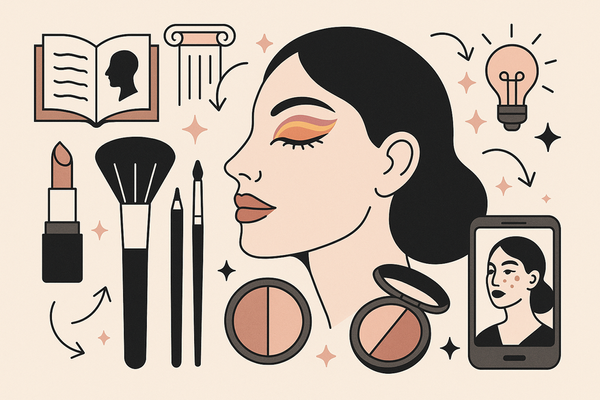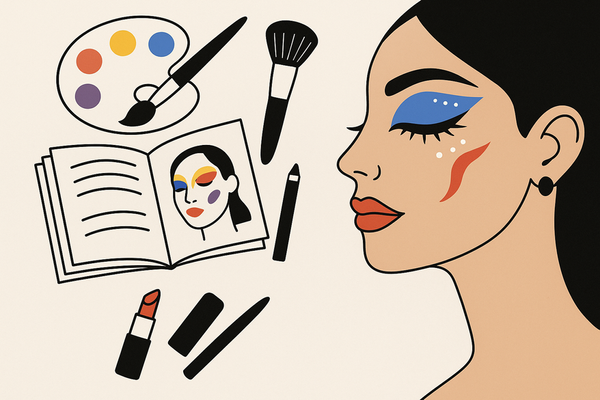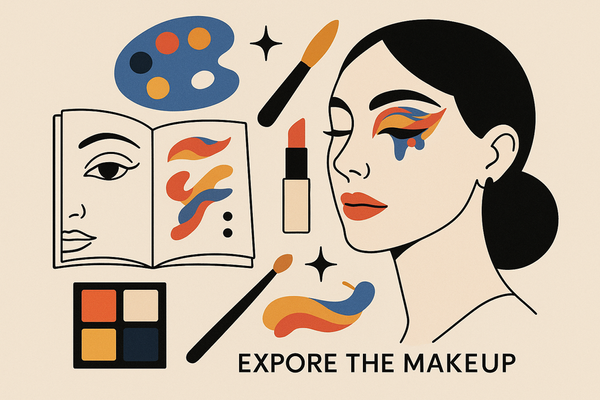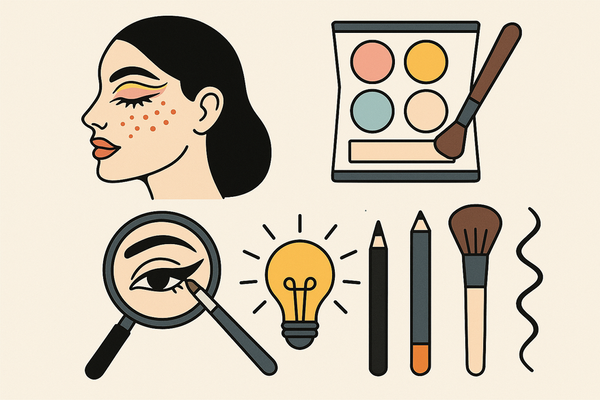Mastering Creative Makeup Designs: A Comprehensive Guide to Artistic Expression
Explore the world of creative makeup designs with our comprehensive guide, featuring techniques, tools, and inspiration for bold, artistic expressions.

Estimated reading time: 7 minutes
Key Takeaways
- Creative makeup designs turn faces into artistic canvases with bold, concept-driven looks.
- Understanding key elements and techniques—color theory, patterns, texture, and application methods—is essential.
- Must-have tools and products include high-pigment palettes, fine-tip liners, and an airbrush system.
- Inspiration can come from social media, runway shows, art exhibitions, and pop culture events.
- Step-by-step galaxy-inspired tutorial provides a hands-on approach to mastering creative techniques.
- Troubleshooting tips help overcome smudging, fallout, uneven application, and more.
Table of Contents
- Overview of Creative Makeup Designs
- Essential Elements and Techniques
- Tools and Products
- Inspiration and Trend Analysis
- Step-by-Step Galaxy-Inspired Tutorial
- Challenges and Solutions
- Conclusion
- FAQ
Overview of Creative Makeup Designs
Creative makeup designs go beyond everyday foundation and mascara. They focus on bold experimentation, graphic elements, and vivid palettes to craft story-driven looks. Unlike traditional makeup, which emphasizes subtle contouring and natural hues, creative designs lean into abstract motifs, sharp contrasts, and avant-garde shapes. These looks draw inspiration from runway fashion, contemporary art movements like abstract expressionism, and cultural mythologies from around the world.
Today, platforms such as Instagram and TikTok accelerate trend sharing, while hashtag culture (for example, #CreativeMakeupDesigns) makes it simple to discover new artists and tutorials.
Pro Tip: Many professionals sketch concepts on face charts before applying makeup live to refine graphic patterns.
Essential Elements and Techniques
Mastering standout makeup art requires a command of color theory, pattern design, texture choices, and precise application methods.
- Color Choice
– Pair complementary hues such as blue and orange for dramatic contrast, or blend analogs like pink, red, and purple for smooth gradients. - Patterns
– Use geometric shapes (triangles, circles) or abstract motifs (swirls, splatters) for visual interest. - Texture
– Incorporate cosmetic-grade glitter, metallic powders, and skin-safe gemstones for dimension and shine.
Popular Techniques:
- Airbrushing: Creates ultra-smooth transitions; test at 15–25 psi to avoid splatters.
- Stenciling: Ensures precise, repeatable designs—secure templates with gentle tape.
- Layering: Build pigment in thin coats, waiting 30–60 seconds between layers for adhesion.
- Graphic Liner: Draw sharp edges with a 0.5 mm brush; waterproof formulas keep shapes crisp.
Tools and Products
- High-Pigment Palettes: At least 12 shades in cream-to-powder formulas for versatility.
- Fine-Tip Liners: Liquid and gel options with brushes down to 0.5 mm for intricate work.
- Brushes & Sponges: Flat brushes for color packing, angled brushes for liners, and latex-free sponges for blending.
- Airbrush System: A compressor set to 15–25 psi delivers smooth coverage on skin and body.
Specialty Items: Cosmetic glitters, loose pigments, metallic powders, medical-grade adhesives, and liquid latex.
Inspiration and Trend Analysis
Top artists find fresh ideas beyond beauty blogs—look to art galleries, fashion runways, and pop-culture events. For a deep dive into AI-powered inspiration, see AI-powered inspiration.
- Social Media: Curate feeds with #CreativeMakeupDesigns on Instagram and TikTok.
- Runway Shows: Observe seasonal couture collections for avant-garde color pairings.
- Art Exhibitions: Museums and comic conventions offer thematic motifs and dramatic visuals.
Step-by-Step Galaxy-Inspired Tutorial
- Prep the Skin: Cleanse, tone, and moisturize; apply a silicone or hydrating primer and wait 60 seconds to set.
- Sketch Motifs: Use a white liner to outline stars, swirls, and planets.
- Base & Blend: Apply navy-blue shadow, then blend violet and fuchsia upward.
- Add Texture: Pat shimmer pigment at focal points, press on gemstones, and dust iridescent glitter.
- Build & Set: Layer pigments gradually; finish with a mist of setting spray or translucent powder.
- Finishing Touches: Draw tiny white dots for distant stars and define a cut-crease with concealer.
Challenges and Solutions
- Smudging or Fallout: Work in thin layers and use a fan brush to remove excess.
- Uneven Application: Build color gradually; apply creams with a damp sponge.
- Creasing or Fading: Use eyeshadow primer or skin-safe glue base; finish with setting spray.
- Allergic Reactions: Opt for hypoallergenic, non-comedogenic products and patch test.
- Asymmetry: Employ makeup tape or stencils and correct with micellar water and a fine brush.
Conclusion
Creative makeup designs blend art and self-expression into transformative looks. You’ve explored core techniques, essential tools, and where to find inspiration. You’ve followed a galaxy-inspired tutorial and learned to troubleshoot common issues. Now it’s your turn: grab your brushes, choose bold pigments, and start creating. Share your art using #CreativeMakeupDesigns, comment your favorite technique, and subscribe for more tutorials. For a primer on AI-powered creative makeup, check out our guide.
FAQ
- Q: What brushes do I need?
A: A set of synthetic flat, angled, and fluffy brushes plus latex-free sponges cover most techniques. - Q: How do I prevent fallout?
A: Apply in thin layers, tap off excess product, and use a fan brush to clean stray particles. - Q: Can beginners try these looks?
A: Absolutely—start with simple stencil patterns and basic color blending. - Q: Are these products safe?
A: Choose cosmetic-grade, FDA-approved glitters and hypoallergenic formulas and always patch test.




